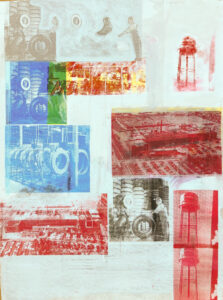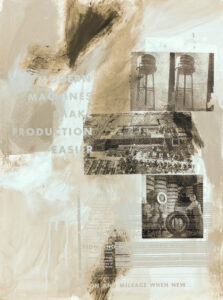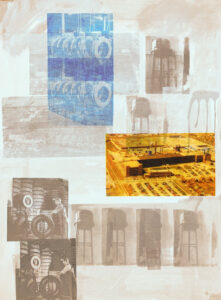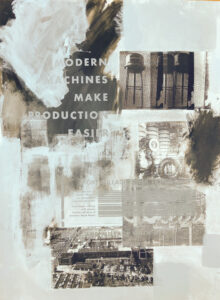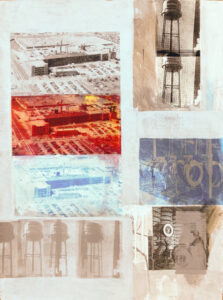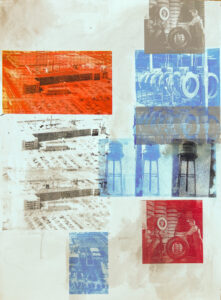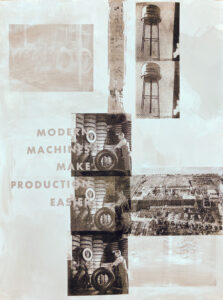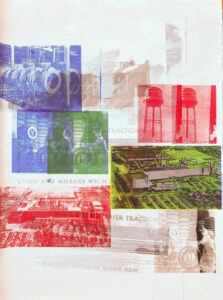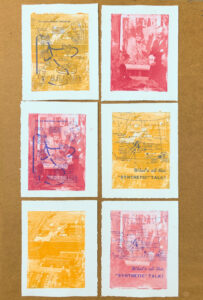These works focus on the former Dominion Tire factory in Kitchener, Ontario, Canada.
The old Dominion Tire factory overlooks my neighborhood in Kitchener, which was originally developed to provide nearby housing for factory employees. The factory was built by Dominion Rubber in the early 1900s. Today, it is still operating (as Airboss Rubber Compounding) but with a greatly reduced workforce. The tire warehouses were recently redeveloped as office space for the technology industry.
In this work, I focus on imagery from the factory’s peak productivity in the 1950s and 60s, when it was part of Uniroyal. Today, from the vantage of our post-industrial economy, many look back on this period with nostalgia. We preserve the exteriors of factories even when they are repurposed, for instance, as condos designed for Google employees and other knowledge workers. Industrial nostalgia might reflect a yearning by those who no longer work with their hands for a “simpler time” when people built tangible products.
In these prints I have selected images that capture the optimistic faith in technological progress — the notion that accelerating economic productivity is sustainable and good for all members of society — that marks the postwar boom. That optimism, now faded, lies at the core of industrial nostalgia. Today, looking back on the postwar boom produces mixed feelings. Workers shared the proceeds of greater productivity and efficiency, perhaps more than in any era before or since, but the cost of that growth, particularly in environmental impact, is only now being fully recognized. Dominion Tire was built, after all, to serve the growing automobile industry, and the technological developments that led to the eventual replacement of natural with synthetic rubber also depended heavily on petroleum products. The stagnation of wages that began in the 1970s and continues today is also partially a consequence of increasing efficiency (specifically, automation and globalization). Management engineering concentrated decision making in a much smaller segment of executive employees, and their compensation increasingly came in the form of stock shares; predictably, shareholder value rather than employee welfare became the corporate priority.
In this work I have attempted to capture aspects of the era’s prosperity and also the seeds of its eventual demise, through a mix of monochrome and multicolored screenprints (which were under- and over-painted in a process inspired by Rauschenberg’s silkscreen paintings from the early 1960s), and copperplate photopolymer prints.
Image Sources:
Photo of tires being weighed by workman: Library and Archives Canada, Online MIKAN no. 3196997.
All text/graphics, and photo of executive giving presentation while holding latex bottle: The Dominion company newsletter, 1955-58, Kitchener Public Library local history collection.
All other photographs: University of Waterloo Library, Special Collections and Archives, Dominion Rubber Company fonds.
